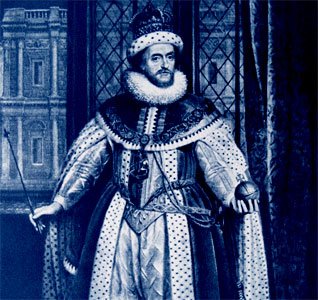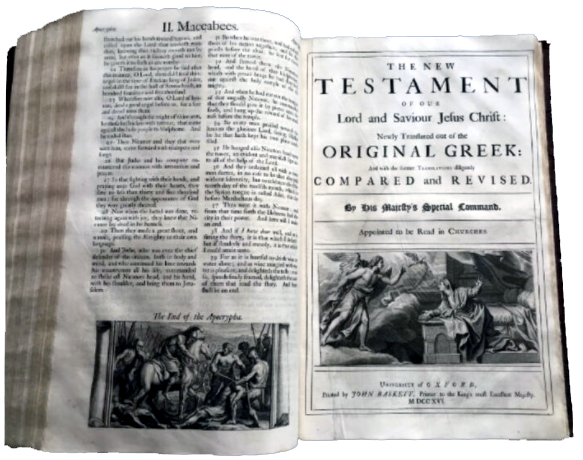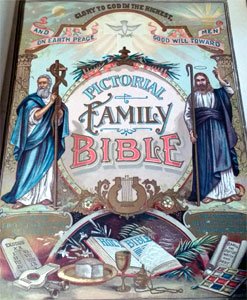The development of the English Bible is a fascinating journey that spans centuries and involves numerous individuals and events. It is a testament to the dedication and perseverance of those who sought to make the Word of God accessible to the English-speaking world.
The development of the English Bible is a testament to the power of language and the importance of making the Word of God accessible to all. It is a journey that continues to this day, as scholars and translators strive to bring the timeless message of the Bible to an ever-changing world
The Wycliffe Bible

The Wycliffe English Bible holds a significant place in the history of English literature and religious texts. Its development played a crucial role in shaping the English language and paving the way for future translations of the Bible.
The Wycliffe English Bible, also known as the Wycliffe Bible or the Wycliffe Version, was the first complete translation of the Bible into the English language. It was primarily translated by John Wycliffe, a theologian and scholar, during the 14th century.
Learn more about the Wycliffe Bible.

The Tyndale Bible
William Tyndale, an English scholar and theologian, was born around 1494. Influenced by the ideas of the Reformation, he became passionate about translating the Bible into English, believing that everyone should have the opportunity to read and understand the Scriptures. The development of the Tyndale Bible exemplifies the power of determination and the desire for religious reform. It remains a testament to the enduring influence of the Reformation and the importance of making the Bible accessible to all. Learn more about the Tyndale Bible.
The English “Great Bible“

The Great Bible, also known as the Cromwell Bible, was commissioned during the reign of King Henry VIII in the 16th century. At the time, England was undergoing a religious and political transformation, as Henry VIII sought to break away from the authority of the Roman Catholic Church. Upon its completion, the Great Bible was authorized by the King to be placed in every church in England. This widespread distribution ensured that the Bible was accessible to the masses and played a crucial role in the spread of Protestantism. Learn more about the “Great Bible”.
The Geneva English Bible
One of the notable features of the Geneva Bible was its extensive study aids and commentary. It included chapter summaries, cross-references, and explanatory notes that helped readers better comprehend the text. This emphasis on study tools and annotations made the Geneva Bible a valuable resource for personal Bible study. Another significant innovation was the use of verse divisions. The Geneva Bible was the first English translation to divide the text into numbered verses, which greatly facilitated referencing and cross-referencing specific passages. Furthermore, the Geneva Bible’s emphasis on individual study and interpretation of Scripture laid the foundation for the Protestant tradition of personal Bible reading and reflection. Its influence can still be felt in modern translations and study Bibles today. Learn more about the Geneva Bible.
The Bishops’ English Bible

The development of the Bishops Bible can be traced back to the reign of Queen Elizabeth I in the late 16th century. At that time, there was a growing demand for an English translation of the Bible that would be more accurate and accessible to the common people. The existing translations, such as the Great Bible and the Geneva Bible, had their limitations and were not widely accepted. In response to this need, a group of scholars, including several bishops, was appointed to oversee the translation of the Bible. The aim was to create a version that would be authoritative, yet easily understood by the general population. The translation work began in 1563 and was completed in 1602. Learn more about the Bishops’ Bible.
The Douay-Rheims English Bible

The story of the Douay-Rheims Bible begins in the late 16th century when a group of English Catholic scholars fled to the European continent to escape religious persecution. These scholars, known as the Douay-Rheims translators, sought to provide an accurate and reliable English translation of the Bible for the Catholic community. The project took shape in the city of Douai (or Douay) in present-day France, where the translators produced the New Testament in 1582. It was the first English translation to be based on the Latin Vulgate, the official Latin version of the Bible used by the Catholic Church. Learn more about the Douay-Rheims Bible.
The King James English Bible

The origins of the King James Bible can be traced back to the early 17th century when King James I of England commissioned a new translation of the Bible to address the perceived flaws of existing translations. The project was undertaken by a group of 47 scholars, divided into six committees, who were tasked with translating different sections of the Bible. The translation process was meticulous and thorough, with each committee working independently and then coming together to review and refine their work. The scholars used a variety of sources, including previous English translations and the original Hebrew and Greek texts, to ensure accuracy and consistency. Learn more about the King James Bible.
The Vinegar Bible

The Vinegar Bible, also known as the “Baskett Bible,” is a notable edition of the King James Version of the Bible. Published in 1717, it gained its peculiar nickname due to a printing error in the header of Luke 20, where “vineyard” was mistakenly printed as “vinegar.” The development of the Vinegar Bible can be traced back to the 18th century when John Baskett, an English printer, undertook the ambitious task of producing a new edition of the King James Version. Baskett’s intention was to create a beautifully designed Bible that would be affordable for the general public. Learn more about the Vinegar Bible.
The Macklin Bible

The journey of the Macklin Bible began in the late 18th century when Thomas Macklin, a renowned publisher and art dealer, envisioned an exquisite edition of the Bible that would combine the beauty of art with the sacredness of scripture. To achieve this, he assembled a team of talented artists and scholars to collaborate on this ambitious project. The translation used for the Macklin Bible was the King James Version, widely regarded for its literary excellence and historical significance. The team meticulously worked on the visual representation of the Bible, commissioning renowned artists to create intricate engravings that adorned the pages. Learn more about the Macklin Bible.
Harper’s Illuminated Bible

The development of the Harper’s Illuminated Bible began in the late 19th century, when the renowned publishing house Harper & Brothers decided to produce a lavishly illustrated edition of the Bible. The project aimed to create a visually stunning and accessible version of the Scriptures for the general public. The Harper’s Illuminated Bible was published in parts, allowing readers to collect and bind the individual volumes. This approach made the Bible more affordable and accessible to a wider audience. The project spanned several years, with the final volume being published in 1911. Learn more about Harper’s Illuminated Bible.
Family English Bibles

Today, the English Family Bible continues to evolve with the advancement of technology. Digital versions, audio recordings, and online resources have made the scriptures more accessible than ever before. Despite these modern adaptations, the essence and importance of the English Family Bible remain unchanged – it is a cherished heirloom that holds the stories, teachings, and wisdom of the Christian faith. Learn more about Family Bibles.

